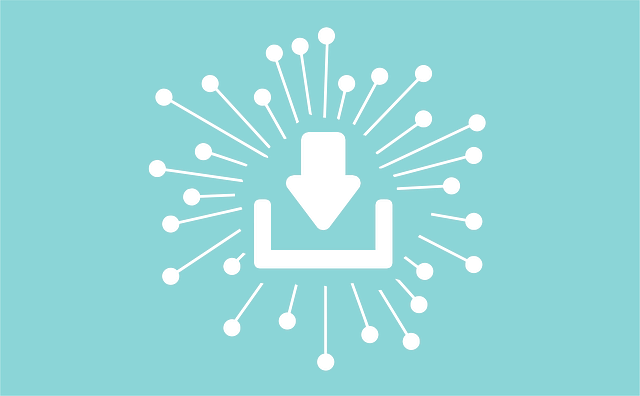
Before editing scanned PDFs, ensure high-resolution scans and use OCR to convert images into searchable text. Choose specialized PDF editing software with advanced tools for better results. Adjust PPI/DPI for sharper text and images. Remove or add pages as needed for academic or research accuracy. Save refined documents as final PDFs with descriptive names for easy access and sharing.
Editing a scanned document in PDF format might seem daunting, but with the right tools and techniques, it becomes manageable. This guide will walk you through the process of enhancing your scanned PDFs, from understanding the file to saving your final, polished document for seamless download. We’ll cover key steps like choosing suitable editing software, improving text readability, optimizing image quality, managing pages, and ultimately ensuring a professional output ready for distribution.
- Understand Your Scanned PDF
- Choose the Right Editing Tool
- Enhance Text Readability
- Adjust Image Quality and Resolution
- Remove or Add Pages as Needed
- Save and Download Final Document
Understand Your Scanned PDF

Before diving into editing, it’s crucial to understand the unique characteristics of your scanned PDF. Unlike traditional digital documents, scanned PDFs are created by converting physical pages into digital format, often resulting in image-based content. This means that text might be presented as images rather than editable words, which can pose challenges when making revisions or annotating. However, with the right tools and techniques, you can effectively edit these files.
One key aspect to consider is the quality of the scan. Poor scanning can lead to blurry text or distorted images, making editing more difficult. Ensure your scanned PDF is high-resolution for better accuracy during editing. Additionally, some scanned documents may include social justice issues related to accessibility, such as text that’s not clear or easily readable. Adopting effective study habits, like using optical character recognition (OCR) software, can help convert images into searchable and editable text, enhancing the editing process—especially if you’re aiming for a polished final product that could even inspire entrepreneurship 101 lessons on leveraging technology. Visit us at social justice issues anytime to explore these possibilities further.
Choose the Right Editing Tool

When it comes to editing scanned documents in PDF format, choosing the right tool is paramount. Opt for software that specifically caters to PDF editing, as these tools are designed to handle complex tasks like enhancing text readability, correcting images, and reorganizing pages—essential skills for refining your work.
Consider features tailored for different needs: if you frequently outline academic papers or delve into digital media production, look for programs with advanced formatting options and annotation tools. Even basic editing software can provide a smooth experience, making it easy to refine scanned documents, whether for personal or professional use. Remember, the right tool can significantly streamline your workflow, saving you time and effort—especially when dealing with intricate documents. So, take some time to explore and download an application that aligns with your specific requirements, and find us at global citizenry awareness for more resources.
Enhance Text Readability

To ensure your scanned PDF document is easily readable and accessible, enhancing text clarity is crucial. Start by using optical character recognition (OCR) tools available in various PDF editors to convert scanned images into searchable text. This process involves scanning the document and then employing the OCR feature to recognize and digitize the text, making it possible to copy, search, or edit as needed.
For better results, consider utilizing apps that offer advanced features like text improvement algorithms, which can refine the converted text by fixing errors and enhancing overall readability. These tools often include options for language selection and character formatting, ensuring a more polished final product. Remember to test the output with basic reading tasks or even film analysis guides to ensure it aligns with your document’s purpose, whether it deals with scientific method basics or highlights social justice issues—all while maintaining accuracy, especially when dealing with sensitive information like those you might encounter during cybersecurity awareness initiatives by visiting us at any time.
Adjust Image Quality and Resolution

When editing a scanned PDF document, adjusting image quality and resolution is crucial for achieving sharp and clear text and images. Start by opening your PDF in a compatible editor that offers advanced imaging tools. Look for settings that allow you to adjust the pixels per inch (PPI) or dots per inch (DPI). Higher values will result in better detail and clarity, especially if you plan to print the document. This process is akin to refining an art piece, where you use various techniques like zooming in and out to ensure every element is crisp.
Consider downloading specialized software designed for PDF editing, which often comes with sophisticated learning strategies for art appreciation techniques. These tools enable you to experiment with different settings to find the perfect balance between file size and image quality. For instance, if you’re preparing a document for professional use or academic submission, opt for higher resolutions to ensure clarity. Conversely, if you’re sharing light personal notes, slightly lower settings might suffice while still maintaining legibility. Visit us at essay structure guide anytime for more insights into entrepreneurship 101 and effective document preparation.
Remove or Add Pages as Needed

Editing a scanned PDF document often involves making changes to its pages. If your downloaded file contains extra or missing pages, you’ll need to know how to remove or add them effectively. This process is crucial for ensuring your document remains organised and accurate, especially when sharing academic papers or research materials that require precise mathematical problem-solving or the application of scientific method basics.
Using user-friendly PDF editors, you can easily navigate through the pages, identify unnecessary content, and delete it to maintain a clean digital media production. Conversely, if certain pages are missing critical information, you can add them from other sources or create new ones using text and image tools available in these editing software. This flexibility is beneficial when applying learning strategies for complex subjects, ensuring all relevant data is accessible for comprehensive understanding.
Save and Download Final Document

Once you’ve made all the necessary edits and adjustments to your scanned document, it’s time to save and download your final PDF. This crucial step ensures that your refined work is preserved and accessible for future reference or sharing. You can opt to save it locally on your device or upload it to a cloud storage platform for easy retrieval. When saving, consider using a meaningful file name that reflects the content of your document—this practice aids in efficient organization and quick identification.
After downloading your PDF, you may choose to share it with a collaborative team for feedback or use it as a reference for other projects like geography mapping skills or creating a persuasive speech structure. If you’re satisfied with the outcome, feel free to share it widely, whether through email, social media platforms, or by publishing it on relevant online resources. Remember, the ease of download and accessibility of your document can greatly enhance its impact, so take advantage of these features to reach a broader audience. For any further assistance, give us a call at Scientific Method Basics.
Editing a scanned document in PDF format can seem daunting, but with the right tools and techniques, it becomes manageable. By understanding your scanned PDF, selecting an appropriate editing tool, enhancing text readability, adjusting image quality, managing pages, and finally saving and downloading your work, you’ll have successfully transformed your scanned document into a polished, editable PDF. Remember to choose a tool that offers all the necessary features from our discussed sections to ensure a seamless editing experience. Happy editing! And don’t forget, once you’ve completed your edits, it’s time to download your final document.






